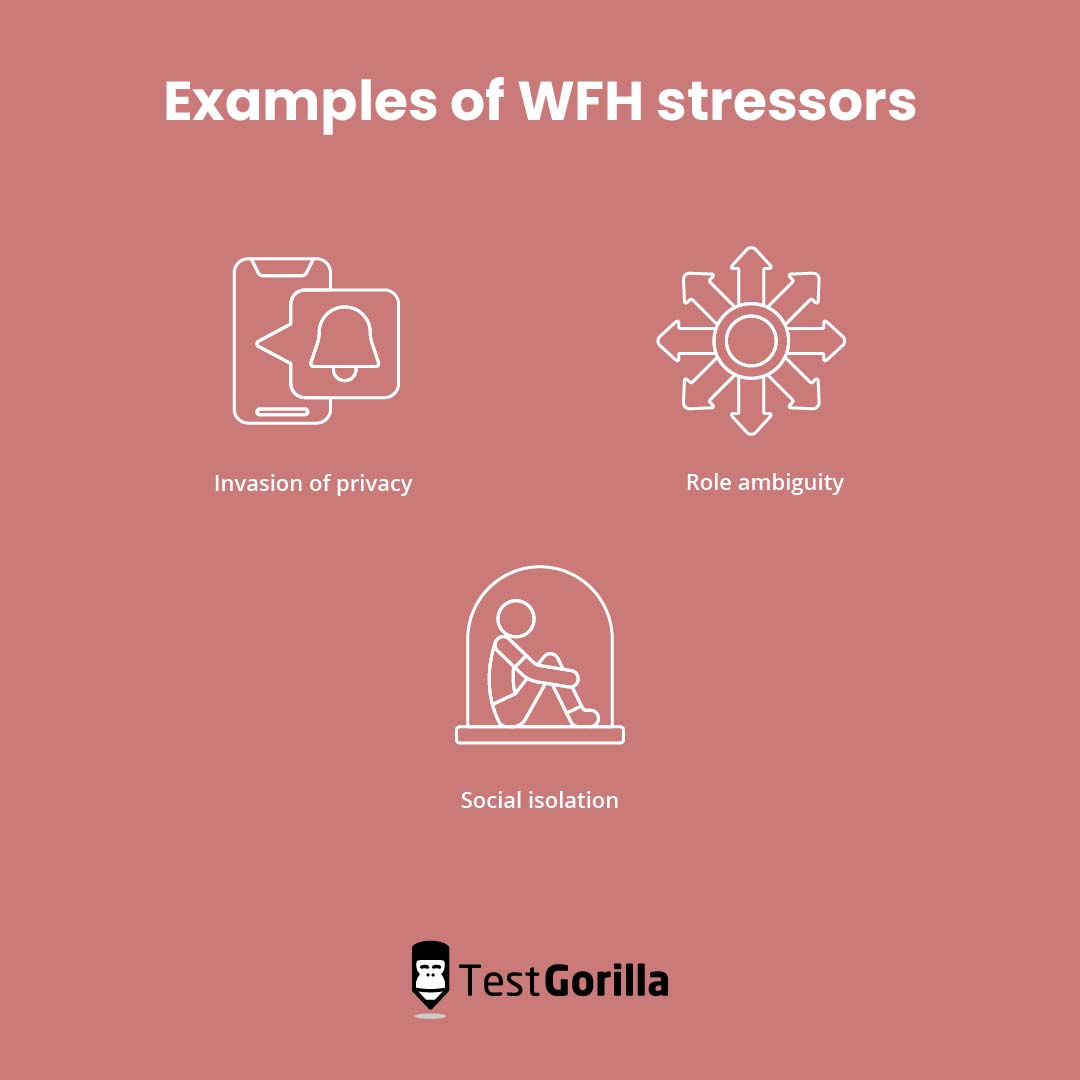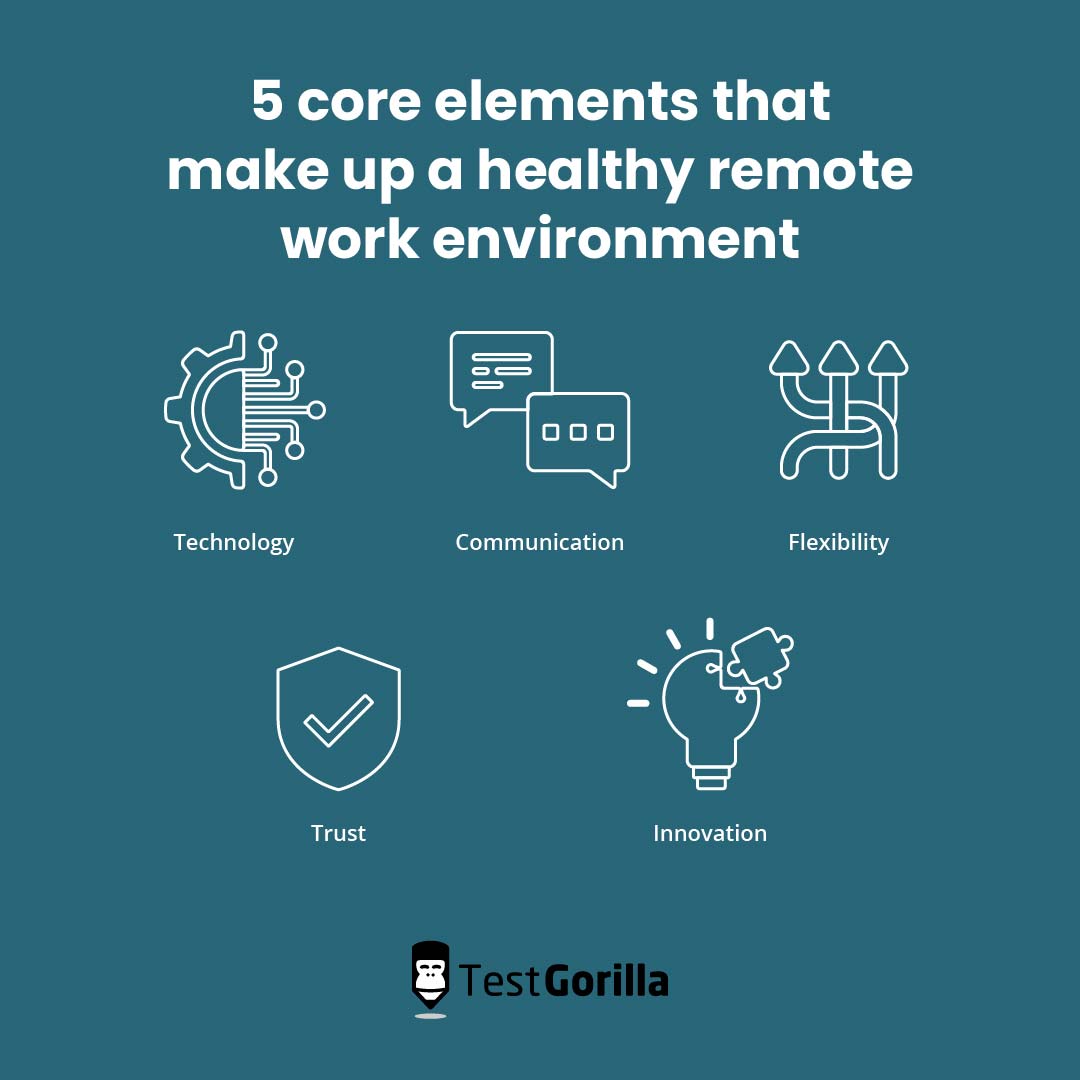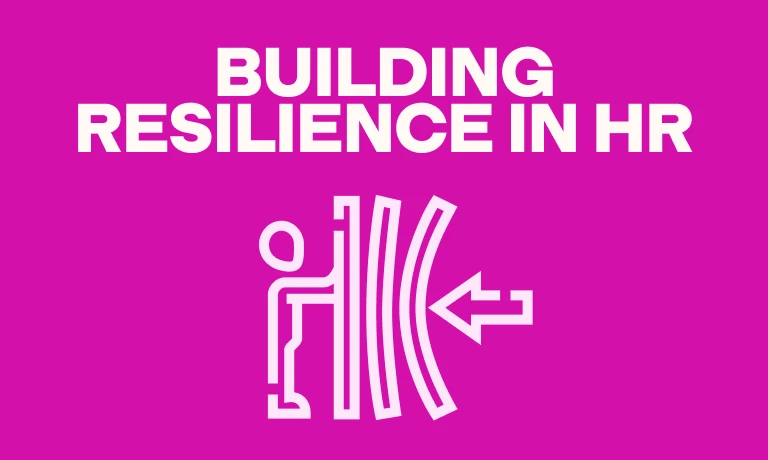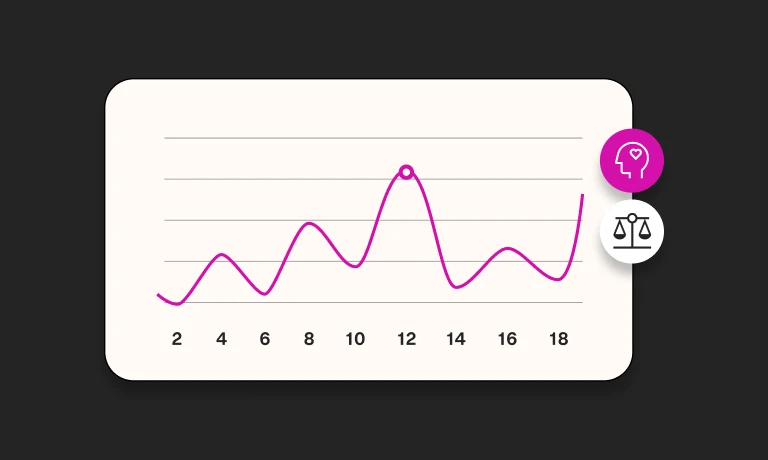Many of us arrived in the world of remote work during the Covid-19 pandemic.
Like travelers in a foreign land, we found we were thriving under these new conditions. We got by with our limited grasp of the local language (“quarantini,” “workation,” “lockdown,” “lunch ‘n’ learn”) and sharpened our remote working skills.
But after a while, many of us found that something didn’t feel right. We suddenly had to dig deep to find motivation. Our colleagues were burning out and dropping the ball, maybe seeking other jobs – an effect McKinsey calls “the great exhaustion.”[1]
It turns out there is a dark side to remote work, and many are now experiencing working-from-home depression.
As an employer or HR leader, how can you help your employees navigate mental health struggles in the remote workplace and create an inclusive environment?
In this blog post, we’ll cover what working-from-home depression is and eight tips for combating it.
Can working from home cause depression, anxiety, and other mental well-being issues?
Before we jump into the solutions, is it true that working from home (WFH) causes depression, anxiety, and other mental health issues?
The short answer is not always, but there is a proven link.
A meta-analysis of more than 20 studies into the impact of WFH on employee well-being found several negative effects, including stressors such as:
Invasion of privacy
Role ambiguity
Lack of social support from colleagues (social isolation)
Many of us experienced similar issues during the pandemic. Who hasn’t heard the dreaded ping of a work email just as they’re getting into bed?
How many of us have changed clothes at the end of the work day or rearranged our living space, all in the hopes of creating a clear boundary between work time and downtime while WFH?
It’s no surprise that this can harm our mental health. In fact, the negative effects of WFM are particularly acute for people who already suffer from mental illness. A 2022 study found that they are more likely to report their mental health conditions worsening when WFH.
Younger employees are also more likely to feel the negative effects, perhaps due to their increased likelihood of living in cramped or shared accommodations and fighting for Wi-Fi priority with many roommates.
We’re sure we don’t need to convince you that this is a problem. But how can you convince senior management that it’s the company’s problem to solve?
Start by letting them know that the cost of employee burnout and disengagement might be invisible, but that doesn’t mean it’s not huge. The cost of mental strain to organizations is enormous: Gallup estimates that low employee engagement alone costs the global economy $7.8tn.
The good news is that you can do something about it.
The 2022 study we cited earlier found that leadership quality was a huge mitigating factor for the negative effects of WFH on mental health. And the fact that you’re here shows you’re already on your way to leading your organization toward a solution to this issue.
What are the symptoms of WFH depression?
Before we jump into tips and strategies, it’s useful to outline the symptoms of WFH depression you should be looking for. Although it’s helpful to familiarize yourself with the symptoms of depression more generally, these may be harder to spot in a remote working environment.
Here are some behavioral changes that could be signs of WFH depression.
Change | Example |
Communication patterns | An employee who has always been prompt and polite on Slack is now slow to respond and subdued |
How employees present themselves in meetings | An employee who usually has their camera on and looks presentable in meetings now always turns it off; They show up to virtual meetings in pajamas when they previously always wore professional attire |
Working schedule | You notice an employee sending emails and work messages late at night when they usually keep a nine-to-five schedule |
Consistency | An employee who has always been reliable is increasingly forgetting tasks and arriving late to meetings; They are increasingly having unexplained absences or calling in sick |
The best insights on HR and recruitment, delivered to your inbox.
Biweekly updates. No spam. Unsubscribe any time.
How to manage WFH depression: 8 ways to help your remote employees cope
So, what strategies can you use to support employees’ mental health and entice top talent from other companies that don’t prioritize employee well-being? Here are eight tips.
1. Hire people who add to your remote working culture
This doesn’t mean hiring only people you think won’t ever experience mental health issues due to WFH.
Not only would this be unfair, but it’s impossible to do since we can all be affected by anxiety and depression.
Instead, we’re talking about hiring people whose ways of dealing with problems in and out of work complement your organization’s ways of solving them.
One way to accomplish this is by using pre-interview testing to assess culture add. Unlike traditional culture fit, culture add is about finding employees who share your values rather than those who are superficially similar to your existing team.
Hiring employees who add to your culture is good for overall employee well-being because it:
Improves diversity of thought
Unites employees around shared values
Creates a sense of belonging
Limits the possibility of cliques forming since you don’t hire based on conformity
All of this makes for a better baseline for employee mental health.
In addition to testing for culture add, you can also assess for remote work culture while hiring. You can do this by using personality tests and asking candidates how they would deal with common WFH challenges, such as loneliness or managing their workspace.
You can then compare their results and responses with your policies and available support. Suppose a candidate requires regular meetings to feel like part of a team, but your remote team is scattered across the globe, making regular meetings impossible. This could be a sign that they’re not the right fit.
2. Minimize role ambiguity
Role ambiguity refers to when an employee experiences a lack of clarity regarding key elements of their job, for example:
Whom they report to and whose requests they should prioritize
What their responsibilities are – and aren’t
When they should be available to coworkers, for example, by phone or Slack
Maybe role ambiguity sounds like a necessary evil, especially in startups where employees are expected to take initiative and work across multiple teams.
However, it should actually be avoided at all costs. Not only does role ambiguity increase stress, but studies have shown that it can amplify the negative effects of other issues, like having an abusive manager.
To achieve maximum innovation with minimum stress for workers, you should instead:
Create clear job descriptions that help employees understand what’s expected of them
Promote a culture of knowledge sharing to ensure remote employees collaborate and seek support when facing challenges
Outline a clear set of policies around remote working to address key issues like scheduling and communication – speaking of which…
3. Implement a flexible working policy that promotes healthy habits
Helping your workforce maintain healthy habits while WFH is essential to improving employee well-being. These habits include:
Regular breaks throughout the workday
Regular, nutritious meals
A consistent sleep schedule
Daily exercise or any type of physical activity
A 2021 study found that the sudden switch to WFH during the pandemic caused a decrease in physical and mental well-being, with lifestyle factors like neglecting healthy eating and exercise being strong predictors of whether employees developed new mental health conditions.
One way that you can support employees’ healthy lifestyles is by implementing a flexible work schedule to give them more autonomy. Of the surveyed flexible workers, 39% said they experienced benefits to their mental health from having control of their own schedules.[2]
High-level changes you could make to promote this include implementing the 9/80 work schedule to give employees every other Friday off. But even something as simple as allowing employees to choose their own hours as long as they work a certain amount of time each day can be helpful. For instance, you can allow them to:
Take an extra hour to cook a nutritious meal
Start later if they haven’t gotten a good night’s sleep
Make time for exercise
Spend time with family members
These changes can be especially helpful for women. The study cited above found that women were especially vulnerable to WFH depression because they were more likely to be responsible for household chores and childcare.
They may also experience greater restrictions on when they can exercise. For example, it may be too cold and dark for many women to feel safe to run outside before or after work in winter. A flexible schedule enables them to accommodate these considerations.
In addition to allowing employees to log on whenever they choose, ensure they know that their personal time is protected when they log off. Set clear policies about out-of-hours contact.
For example, in France, it’s illegal for businesses to email employees after work hours.
4. Offer parents help with childcare
A study of American healthcare workers found that childcare stress was associated with an 80% higher likelihood of burnout.
Supporting parents in the workplace is one of the most impactful things you can do to promote these employees’ well-being and limit their chances of experiencing WFH depression. This is particularly true for women, who may have to contend with the additional stress of prenatal or postnatal depression.
There are many ways you can do this, including:
Expanding maternal and paternal leave periods so that parents can return to the workforce when they’re ready to give 100%
Offering flexible working to enable them to fit in childcare responsibilities
Creating support groups and processes within the business to enable parents to help each other out
Supporting parents can also have a tremendous impact on diversity, equity and inclusion initiatives. As mentioned above, women still do the lion’s share of housework, and studies suggest that a lack of affordable childcare support keeps them out of the workforce.
Not only will you attract more awesome women to your organization, but they’ll be more able to progress thanks to this inclusive practice.
5. Don’t engage in Big Brother-style time tracking
At TestGorilla, we believe there are five core elements of successful remote working:
Technology
Communication
Flexibility
Trust
Innovation
Perhaps the most important of these is trust. Without it, your whole remote work system will fall apart. Using Big Brother-style time-tracking tools to monitor employees’ productivity makes employees think their bosses don’t trust them to manage their own work.
It may be necessary for some tasks, like tracking billable hours for client work. But in most cases, you should consider if the financial benefits outweigh the mental cost to your workforce.
Instead of tracking employees’ time, create systems of support and accountability, for instance:
Regular opportunities for feedback on workload between employees and managers
Clear performance goals and regular reviews
Time management training for all employees
6. Encourage regular contact with colleagues
As we mentioned earlier, a lack of social support from colleagues when remote working is one of the critical stressors contributing to WFH depression.
That’s why you should ensure your teams communicate as smoothly as possible using the right remote work tools.
You can also encourage teams to bond through weekly catch-ups, remote team-building activities, and remote social events, for example:
Zoom cooking classes in which you send teams meal boxes to prepare together
Remote workshops in which you send teams supplies for arts and crafts to build together
Zoom drinks with takeout vouchers you provide
Even in fully remote companies, it’s still a good idea to get together once in a while.
For example, at TestGorilla, we hold yearly offsite socials. In 2022, we held the inaugural event in Barcelona, where we met up for a range of activities.
The work-related activities included:
AMA sessions with department heads
Team-building exercises, including a “love shower” that had the whole team in tears by the end
Speeches from the C-suite and “Head ofs”
We also packed in loads of fun team-building activities, including:
A city-wide scavenger hunt
A TestGorilla festival and pool party
A guided meditation
A night out arranged by our LGBTQIA group (a suggestion from Otto, our co-founder and chief operating officer)
A sailing event
And (of course) many dinners
Spending time face to face with colleagues helps build a sense of camaraderie and team unity that’s hard to replicate over Zoom. Trust us – we know!
7. Destigmatize discussing mental health at work
The truth is that even if you train yourself to see the signs and offer employees extensive support for mental health issues, unless your workplace is a safe place to discuss them, many of your employees will suffer in silence.
In fact, almost 60% of employees say they never discuss their mental health at work, with nearly half reporting that the reception was unfavorable when they did.
Destigmatizing mental health and ensuring remote workers feel safe to talk about it with their line managers and HR staff is essential to any effort to combat WFH depression.
Some of the best ways to do this are:
Outlining mental health support for remote workers during virtual onboarding
Discussing mental health support non-judgmentally in all-company meetings
Encouraging senior staff to role model open discussion about mental health since they are who your employees will be taking their cues from
8. Invest in insurance, resources, and support
Ultimately, you need to put your money where your mouth is regarding mental health support. According to the meta-analysis we mentioned earlier, many studies found that the less organizational support an individual received, the higher the psychological strain they experienced.
Spending money to prevent a problem you can’t easily see might be a hard sell to your higher-ups. But, as we’ve already shown, the cost of burnout to businesses is so high that it’s a worthwhile investment in the long term.
We’re not saying that if you just throw money at the problem, it will go away – that’s why we’re putting this strategy at the end of our list.
So, where is your money best spent?
First, invest in equipment. Help employees upgrade their home offices so that they have the tech and space to do their jobs and aren’t wrestling with ancient computers or poor internet connections every day.
You can also add money to your budget for remote workers to join a local coworking space so that they can access “in-office” benefits.
Finally – and most importantly – invest in insurance, resources, and dedicated mental health support for your employees. This might be access to digital therapeutics, traditional therapy, or specific help and training for dealing with stress, anxiety, and depression in the workplace. It could also be an in-house mental health professional.
Summary of how to help your employees cope with WFH depression
Don’t have time to read our tips in full? No worries – bookmark this page to come back to later. In the meantime, here’s a quick summary.
Coping method | Example actions |
Hire people who add to your remote working culture | Test candidates for culture add; Compare candidates’ support needs with your company’s resources |
Minimize role ambiguity | Create clear job descriptions; Promote a culture of knowledge sharing to encourage collaboration; Outline clear policies around key issues like scheduling and communication |
Implement a flexible working schedule | Implement a 9/80 work schedule; Allow employees to pick their own hours |
Offer parents help with childcare | Expand maternal and paternal leave periods; Offer parents flexible working options to accommodate childcare responsibilities; Create support groups for parents within the business |
Don’t engage in Big Brother-style time tracking | Create regular opportunities for feedback on workload; Set clear performance goals and regular reviews for all employees; Train all employees in time management |
Encourage regular contact with colleagues | Make sure your teams are using the right communication tools; Facilitate remote team building with remote socials and training; Offer opportunities for teams to meet in person |
Destigmatize discussing mental health | Outline mental health support during virtual onboarding; Discuss mental health support non-judgmentally in all-company meetings; Encourage senior staff to role model open discussion about mental health |
Invest in insurance, resources, and support | Upgrade employees’ home offices; Add to the budget for remote workers to join coworking spaces; Invest in insurance and professional mental health support |
Create a positive culture by improving your remote hiring
Creating a solid plan for tackling WFH depression isn’t easy, but it’s the difference between trying out remote working as a vacation from office life and making the investment to live there for the long haul.
At TestGorilla, we’ve tried and tested the remote work strategy, and we love it.
For our tips on navigating remote hiring and building a robust remote workforce, read our post about the 10 remote hiring mistakes you should avoid. Or get started on improving your remote hiring by testing applicants’ communication skills.
Sources
“Hybrid work anxiety is causing employee burnout”. McKinsey. Retrieved October 17, 2022. https://www.mckinsey.com/capabilities/people-and-organizational-performance/our-insights/five-fifty-the-great-exhaustion
Stevens, P. (May 24, 2019). “The 2019-20 Flexible Working Survey”. Wildgoose. Retrieved October 11, 2022. https://wearewildgoose.com/uk/news/flexible-working-survey-insights/
Related posts
You've scrolled this far
Why not try TestGorilla for free, and see what happens when you put skills first.




















